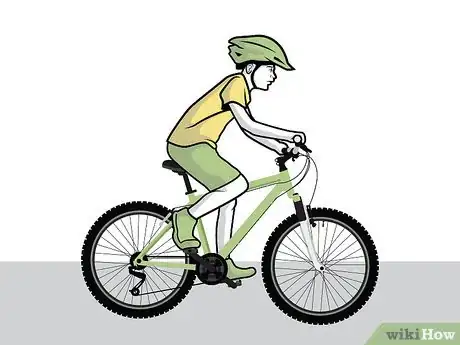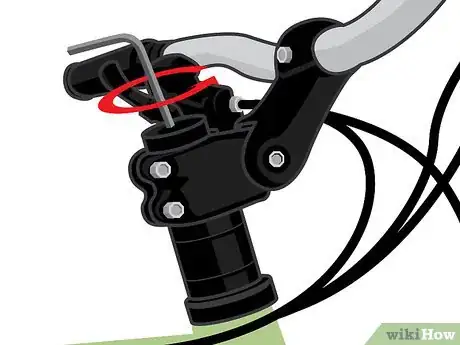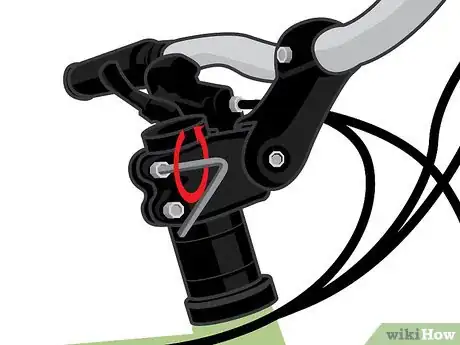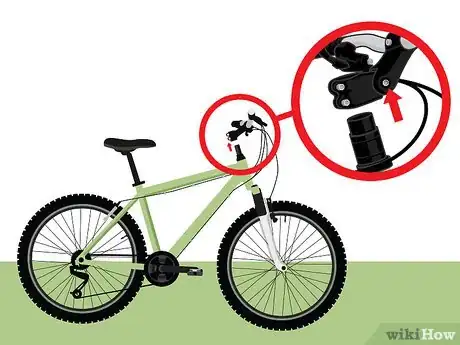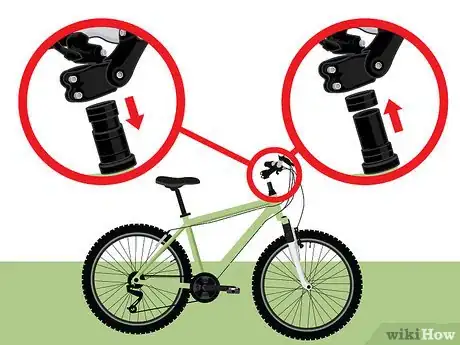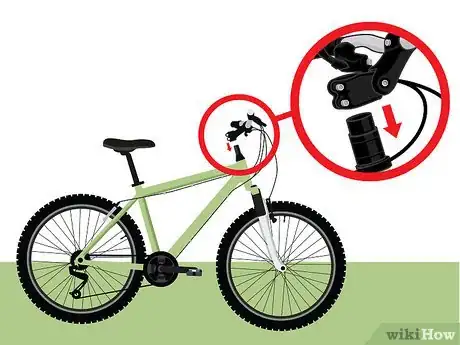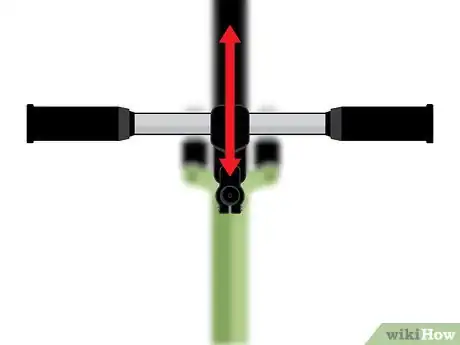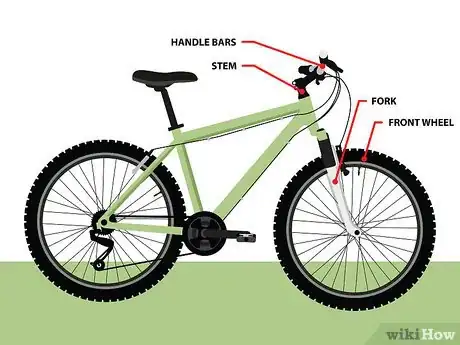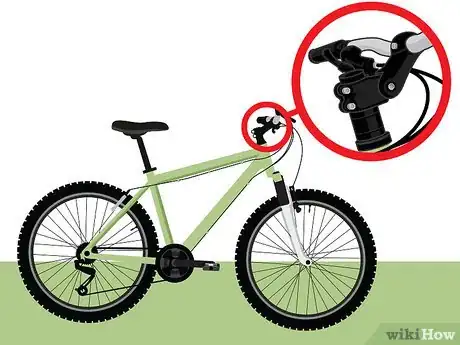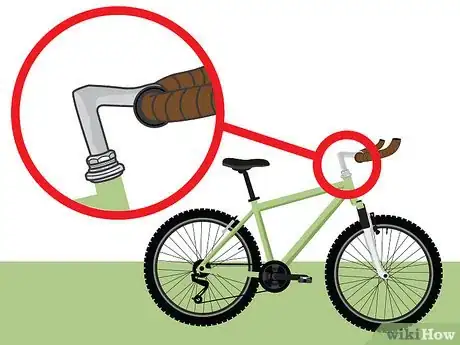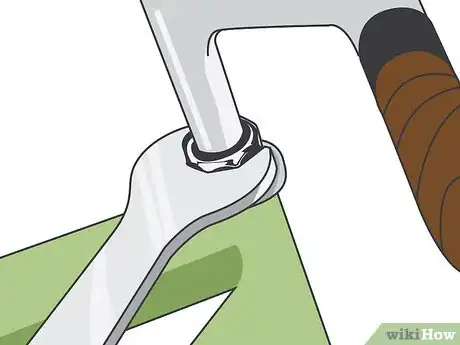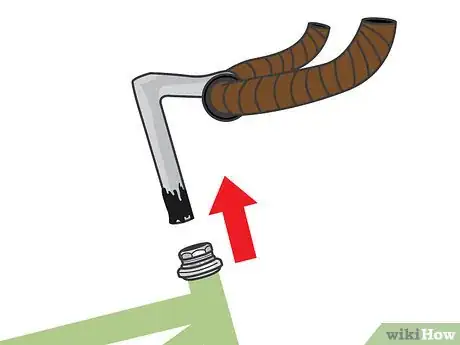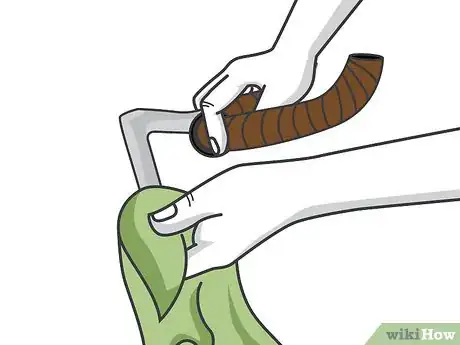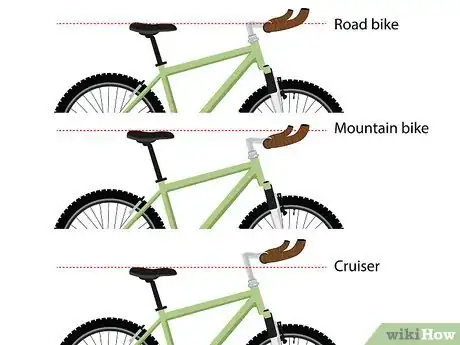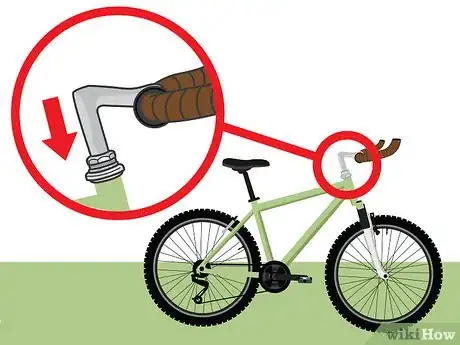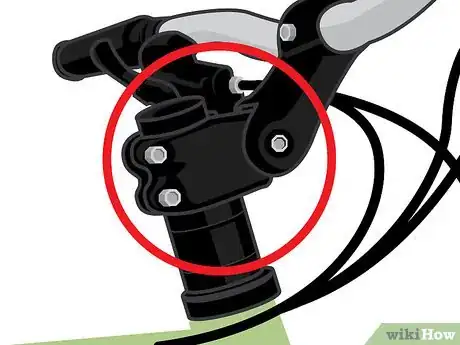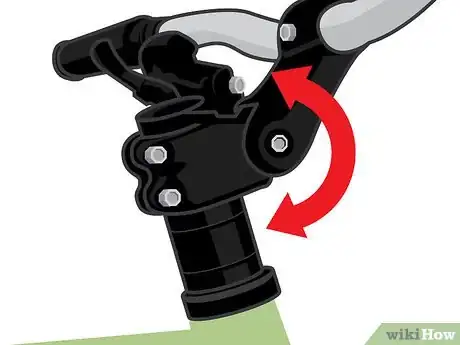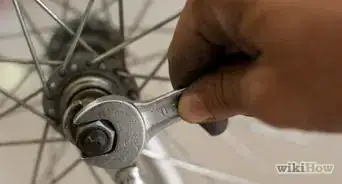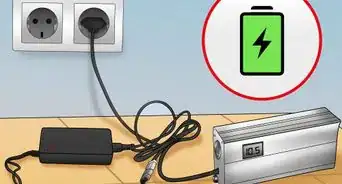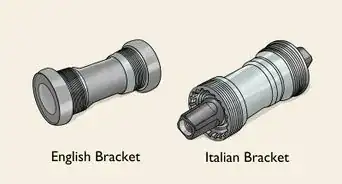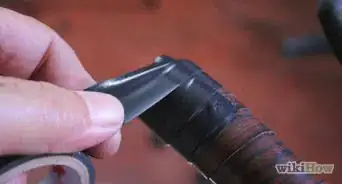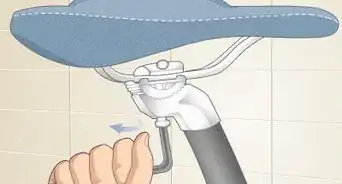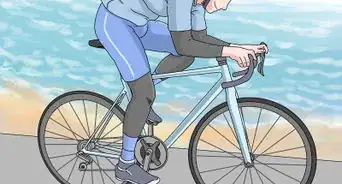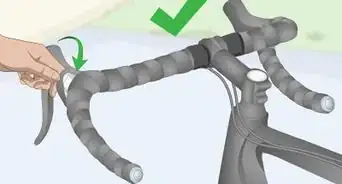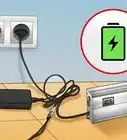This article was co-authored by Jonas Jackel. Jonas Jackel is the Owner of Huckleberry Bicycles, a bicycle retail store based in San Francisco, California. Jonas has over 20 years of experience managing bicycle retail stores and has operated Huckleberry Bicycles since 2011. Huckleberry Bicycles specializes in servicing, repairing, and custom building road, cross, gravel, touring, folding, and e-bikes. Jonas was also previously sat on the Board of Directors for Bike East Bay, a bicycle-advocacy non-profit organization based in Oakland, California.
There are 11 references cited in this article, which can be found at the bottom of the page.
wikiHow marks an article as reader-approved once it receives enough positive feedback. This article received 12 testimonials and 97% of readers who voted found it helpful, earning it our reader-approved status.
This article has been viewed 721,466 times.
Proper adjustment of bicycle handlebars ensures optimum comfort for the rider and enables road and mountain bikers to achieve maximum performance. Growing children also need to have their bikes adjusted each year. Luckily, all you really need is an Allen key, some spacers, and 5-10 minutes to get your headset perfectly adjusted.
Steps
Adjusting Handlebars With a Threadless Headset Stem
-
1Adjust your stem height to your comfort level, not a "right" location. Let your body be the best judge of where you need the handlebars. Your back shouldn't be hunched or bent and your arms should be slightly bent at the elbows. Otherwise, ride how you feel comfortable. Have a friend hold the bike in place by gripping the front wheel between their thighs as you climb into the seat to test the handlebars. Generally, regardless of mountain or road biking:
- Racing riders have low handlebars so they can crouch aerodynamically. They are usually below the seat 2-4".
- Comfort riders or beginners will have handlebars level with the seat or higher.[1]
-
2Loosen the stem cap, the bolt pointing up where the stem meets the bike. Take an Allen key and remove the bolt on the stem cap. This bolt keeps the handlebars on the bike, and you need to remove it to raise or lower your bars. Remove the long bolt and take off the cap, then set them both aside safely for later.Advertisement
-
3Loosen the bolts on each side of the stem. Use an Allen Key to loosen the two side screws on your handlebars. They will be on the part of the stem closest to your seat. Loosen them enough so that you pull the handlebars and stem off the tube in the frame.
-
4Pull the stem off of the bike frame. Slowly remove the handlebars, taking care not to stress or bend any of the wires attached to the brakes and derailleurs. These usually have a little bit of extra slack, but to be safe you should roll the bike up to a table or chair and place the handlebars down carefully, close to the bike.
-
5Add or remove the circular risers to bring the handlebars to the desired height. These spacers are all you have to adjust the height on threadless headsets. They are small rings that you add to gain height and remove to lower the bars. The conical piece that the bottom of the stem and connects to the frame, however, is the bearing cover and cannot be removed.[2]
- You can buy more spacers at your local bike shop if you need the handlebars to get higher.
-
6Slid the handlebar stem back over the spacers. Don't worry too much about aligning the bars perfectly just yet. If you removed any spacers, put them on top of the stem so that you don't lose them. The stem cap bolt will then cover them.
-
7Insert the stem cap bolt and tighten it by hand. You do not need to crank the bolt down, as hand tightness is perfectly fine. This top bolt does not affect the side-to-side movement of the handlebars, so you should tighten it before trying to get the handlebars aligned again.
- If you are working with delicate pieces, like a carbon fiber frame, you should have a torque wrench to make sure you don't crack anything.[3]
- Make sure you can turn the handlebars freely. If not, you should loosen the head bolt slightly until you can easily turn the bike.
-
8Align the stem with the front wheel. Stand over the bike with the frame between your legs, and squeeze the front wheel so that it is facing directly ahead. Close one eye and adjust the handlebars so that the centerpiece is aligned exactly with the front wheel. You want your wheel and handlebars to be in line for proper turning control.
- If you are having trouble keeping the bars in place, tighten the nuts a quarter turn so that you need more pressure to spin the handlebars, yet they still move independently of the wheel.[4]
- Tighten the bolts when you are done and the handlebars are aligned.
-
9Check your headset alignment. The headset, remember, is the entire collection of piece (handlebars, stem, fork, front wheel) that turns your bike. The top bolt attaches to the headset of your bike, which affects your turning. To check it, stand with the bike between your legs and clamp the front brakes down. Turn the wheel back and forth and feel for any rocking or odd movement beneath your hands. If you feel any, loosen the side bolts, tighten the top bolt a little more, then retighten the sides to check again.
- If you are struggling to turn or feel a "tight-spot," loosen the top bolt a little.[5]
-
10Know that threadless headsets can't be adjusted very much. To keep bikes from unnecessary weight, many stems (the connecting, L-shaped piece between your bars and bike) do not have a lot of excess room. If you want to make a larger change to your handlebar height, you will need to purchase a new stem from your local bike shop. If you have serious comfort issues, such as reaching too far or not far enough to your bars, you should consider a longer or shorter stem.
- Threadless headsets have one big bolt on the top and two smaller bolts that help clamp the stem down. If your bike only has one continuous piece of metal connecting the bike to the bars then you have a threaded headset.
Adjusting Threaded Headsets
-
1Know if you have a threaded headset. Threaded headsets have one continuous metal piece (stem) that comes up out of the frame, bends forward, and then attaches to the handlebars. There is a nut where the stem leaves the frame that holds it in place and one bolt at the top of the stem. These stems are easy to adjust and are common on single-speed, fixed gear, and older bikes.
- Some bikes do not have a hex nut by the frame, and just have the bolt on the top of the stem.
-
2Loosen the bolt on the top of the stem. This bolt, pointing straight down, creates the pressure that holds the stem in place. Use an Allen key to loosen in, though your don't need to remove it entirely.[6]
-
3Loosen the locknut with a wrench. Disengage the hex nut, which is the "ring" where the stem meets the bike frame, by loosening it with a wrench.
-
4Pull the handlebars out of the frame. You may need to wiggle, twist, and pull to get them out. If this is a new bike, mark the location where the handlebars used to rest with a marker or measurement so that you can return to this location if you need.
-
5Wipe down and grease the stem lightly. Clean off any gunk on the stem with soapy water and then dry it with an old rag. To prevent the stem from getting stuck in the frame later on, apply a little anti-seize grease around the bottom 2-3 inches of the stem.
-
6Consider the kind of riding you'll be doing when deciding a new handlebar type. Proper handlebar positioning largely depends on the type of bicycle you're using. That said, the number one concern when picking a height is rider comfort. You should put the handlebars where you can comfortably ride every time.[7]
- Road bike: Handlebars on racing bikes should be slightly lower than the seat to provide optimum aerodynamics and control at high speeds.
- Mountain bike: Mountain bike handlebars should be lower than the seat. This gives you a lower center of gravity and better balance when negotiating rugged terrain.
- Cruiser: Handlebars on standard bikes should be slightly higher than the seat to limit strain and provide maximum comfort.
-
7Place the stem back at your desired height and tighten the hex nut and top bolt. Hand tightness should be fine, especially with the top bolt. You don't want to crank on the bolt, making it so tight that you can't remove it later.
Adjusting Handlebar Angle
-
1Check if your bike has an adjustable stem. Adjustable stems have a single bolt running perpendicular to the bike where the stem meets the frame. You can loosen this bolt, adjust the stem angle, then tighten it back to quickly move your handlebars. If you have this option, adjust the stem and test it before moving on -- it may be enough to get you comfortable.
-
2Loosen the four screws at the end of the handlebar stem. The stem is the piece running perpendicular to your handlebars that attaches your frame to the handles. On the front of the bars (as if you were looking at the bike from straight ahead) are four screws, usually clamped to a small square plate on the center of the bars. Loosen these and the handlebars will be able to rotate up and down.
-
3Know how high you should angle your handlebars. You should feel like you could comfortably play piano on your handlebars. You want your arms slightly bent and you should be able to quickly and comfortably reach the brakes. Your back should be at a roughly 45-degree angle from your waist. Have a friend support the bike while you climb onto the seat and check your handlebar position.
- Angling the handlebars is a minor adjustment. If you can't reach the brakes, have to bend over uncomfortably, or must extend your arms all the way, you will need to purchase a new handlebar stem. You may also be riding a bike that is too big for you.[8]
- Position the brake levers so they're pointing at a 45-degree angle toward the ground rather than keeping them parallel.[9]
-
4Angle the handlebars to a comfortable height, lightly tighten them, and test. Have your friend hold the bike, or try a quick practice ride in a small area. Make sure you remember to tighten the bolts before beginning, however, as your weight could force the bars to angle suddenly down and cause a crash.[10]
- In many ways, handlebar angle is a matter of personal preference. As long as you are comfortable, they will work.
- If you've been having finger numbness when riding, consider tipping your bars up a little more. This puts less pressure on your palms that may cut off some circulation.
-
5Tighten the bolts by hand once you've set the right angle. You need them to be hand tightened enough so that the bars don't move when you ride. However, you do not want them to be so tight that you cannot remove the bolts later or the screws become stripped.
Community Q&A
-
QuestionHow can I adjust the brake lever angle on my handlebars?
 Matt GanderCommunity AnswerThe brake levers will have an allen key or hex bolt. It will probably be under each lever near the bar. Loosen it and you can adjust the angle of the levers.
Matt GanderCommunity AnswerThe brake levers will have an allen key or hex bolt. It will probably be under each lever near the bar. Loosen it and you can adjust the angle of the levers. -
QuestionHow do I adjust the movement of my handlebars/forks, as my steering is stiff?
 Community AnswerThe bearings may be seized, or the nuts are too tight.
Community AnswerThe bearings may be seized, or the nuts are too tight. -
QuestionDo I need to purchase additional spacers to raise my handlebars?
 LibArtsPremed18Top AnswererIf you do not have adjustable handlebars, then you will need more spacers or a longer stem to raise them.
LibArtsPremed18Top AnswererIf you do not have adjustable handlebars, then you will need more spacers or a longer stem to raise them.
Warnings
- Double check that you've tightened every bolt before riding again to prevent an accident.⧼thumbs_response⧽
References
- ↑ http://www.bikefit.com/s-13-road-bikes.aspx
- ↑ http://www.bikeradar.com/us/gear/article/how-to-adjust-handlebar-height-38622/
- ↑ http://www.bikeradar.com/us/gear/article/how-to-adjust-handlebar-height-38622/
- ↑ https://youtu.be/Q1rmPj2kmqg?t=1m43s
- ↑ http://www.bikeradar.com/us/gear/article/how-to-adjust-handlebar-height-38622/
- ↑ http://www.sheldonbrown.com/handsup.html
- ↑ http://bicyclehabitat.com/faq/frequently-asked-questions-fq176/how-high-should-the-handlebars-be-27.htm
- ↑ http://www.rei.com/learn/expert-advice/bike-fit.html
- ↑ Jonas Jackel. Owner, Huckleberry Bicycles. Expert Interview. 18 February 2020.
- ↑ Jonas Jackel. Owner, Huckleberry Bicycles. Expert Interview. 18 February 2020.
- ↑ https://youtu.be/Q1rmPj2kmqg?t=5m2s
- ↑ Jonas Jackel. Owner, Huckleberry Bicycles. Expert Interview. 18 February 2020.
- http://www.utahmountainbiking.com/fix/hndlebar.htm
- http://www.jimlangley.net/crank/bikefit.html
- https://www.bikeride.com/overhaul-threaded-headset/
About This Article
To adjust your handlebars, loosen the stem cap before using an Allen Key to take off the bolts on either side of the stem. Then, pull the stem off of the bike frame and lay the handlebars on a table or chair to avoid damaging the brake and gear cables. To increase or decrease the height, add or remove circular risers as required. When you get the height you want, replace the stem, insert the stem cap bolt and tighten it by hand, line up the handlebars with your front wheel, and tighten the side bolts to finish. For tips on how to adjust a threaded headset or how to adjust handlebar angles, read on!
